Myles Kennedy is a workaholic – between Alter Bridge, Slash & The Conspirators and his burgeoning solo career he's either touring, writing or recording. Until last year forced a change – and it might just be for the better.
“I think it’s been a necessary power-down in a sense because leading up until last year I’d been going at such a pace for about a decade and it was starting to have kind of an adverse effect," Myles admits to us. In 2019 I was gone for over 300 days and it was just getting challenging. I think I was burning out, so though it’s been horrible for the state of the world, I think where I was in my life, I chose to try and take advantage of it and power down, rebuild and be creative. So it hasn’t been all negative for me, I’m not going to lie.”
It’s made me realise and appreciate things in life that I hadn’t been exposed to in a long time
Myles being Myles, it wasn't long before the creative instinct kicked n at home; he wrote, demoed and recorded his second solo album The Ides Of March. But the forced time away from the road has made him contemplate the balance of his life going forward.
"It’s made me realise and appreciate things in life that I hadn’t been exposed to in a long time," he explains. "And I think that although I’ve been a workaholic most of my life, I’m also figuring out life is short and we have a finite amount of time. I really want to be a better family member, a better husband. You know, I have commitments to my music and to the bands I play with but I also have covenants that I’ve made with other human beings. So I have to figure out how to juggle that moving forwards for sure.”
Right now we're here to talk about The Ideas Of March, and how Myles's home recording environment inspired him and ended up inspiring the sound of the album. Check out the video of our chat above or read on for the transcript.
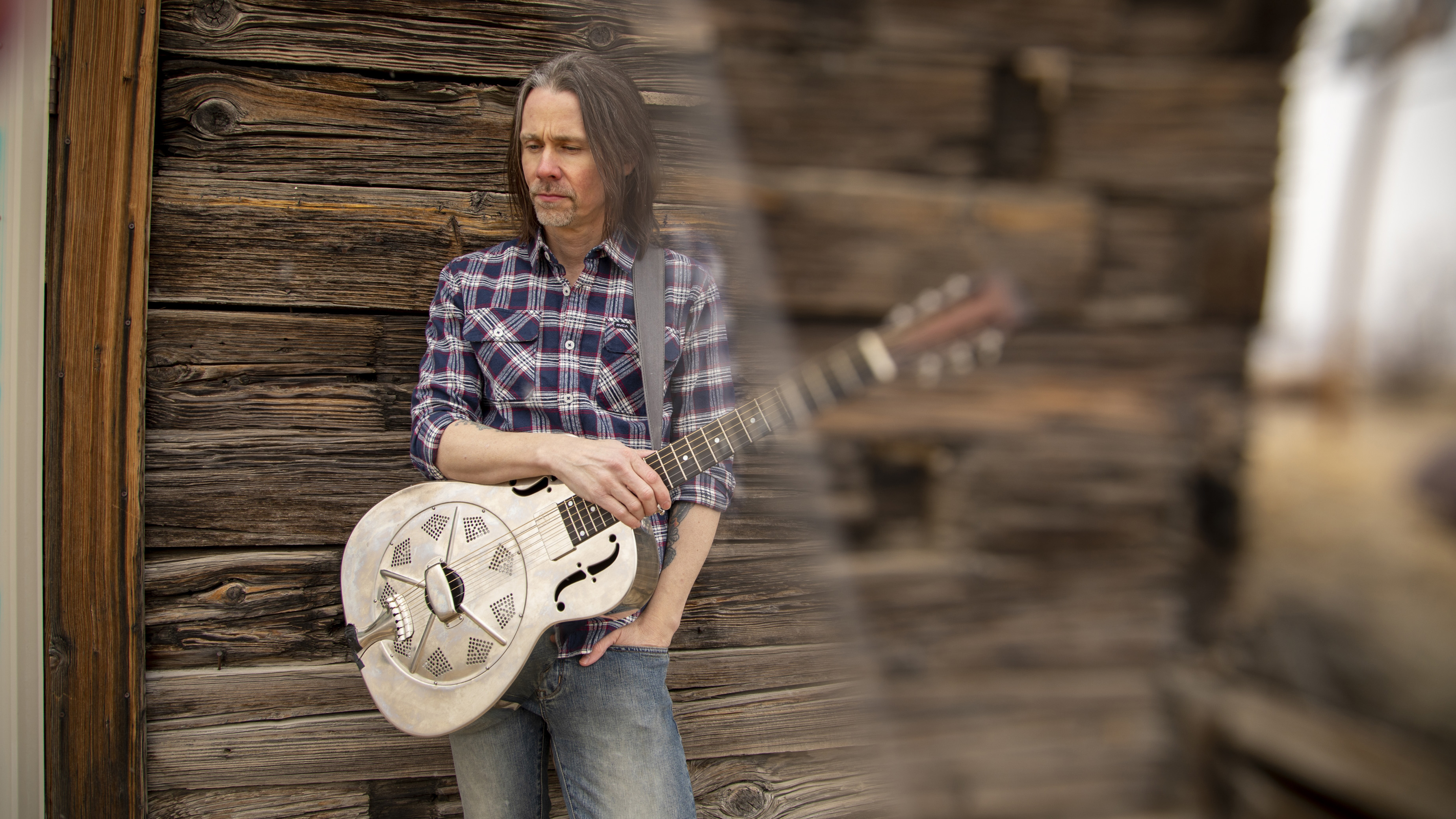
Sonically this album feels like a continuation from Year Of The Tiger in that you’ve taken the acoustic rootsy elements, but combined them really well with a more electric side. Was it initially challenging to balance those two elements?
“Not as challenging as I thought it would be. I did want to make a record that was more turned up, so to speak. And because I wanted to make more of a guitar record. I just missed playing, I missed playing lead. As you know that’s where I started way back in the day. So it was a bit of a challenge, I remember initially demoing – that was the difference between the first solo record and this record because I had so much time. With Year Of The Tiger the songs were written on acoustic guitars and then I turned those acoustic demos over to the guys and we built from there.
Get the MusicRadar Newsletter
Want all the hottest music and gear news, reviews, deals, features and more, direct to your inbox? Sign up here.
“With this, the demos were done and we basically tried to recreate the demos in the studio, just sounding better. So a lot of the parts were already there. I programmed really bad drum parts so Zia [Uddin], my drummer, obviously took those and made those good. But I do remember initially when I was trying to mould what this was going to be sonically [wondering], how do you balance the last record with where I see this going. So it’s not a total about-face with people going, ‘What’s happening?’”
“I will say this, I listen to the first track, Get Along, and it comes out of the gate swinging but then it goes back into more of that territory – there’s more of that acoustic element and there’s a balance between that and the electric guitars.”
In terms of your studio workplace at home, did you expand on the gear you had at the start of lockdown?
“A little bit, nothing too grand. I think I just expanded my audio interface – I switched over to the Universal Audio stuff which I really love. It’s pretty amazing everything you can do with it. So there was a little bit of a learning curve initially and interestingly enough there’s a song on the record called Moonshot and it was my practice session. It was the first song I tried to out together with this new interface and it was written in two hours, it was just kind of an exercise in learning how to use this gear. And it ended up being a song that made the record.
“That was the only change. It wasn’t as if I totally redid my studio or anything. I just wanted to get to work – I just wanted to get cracking.”
Has it surprised you how good the results can be in a home recording environment now?
“Mindblowing. Crazy. I mean Jeez… what are they going to do next? How can they top all this, right? The only thing you can do at this point is for them to develop some kind of Thunderbolt cable that plug into your brain and whatever your brain says, it immediately spits it out in MIDI.”
Were you using the Universal Audio OX? I think I see one in the background there…
“I do have an OX. I didn't use it that much, I actually use that right now as a power soak more than anything so I can crank up my old Fenders. On the demos, really the only guitar sound I kept gravitating towards was UA’s ‘55 Deluxe plugin. And it’s an amazing plugin, it sounds just like an old [Fender] Deluxe.
"So what was interesting was I listened to the demos and I really liked the way that kind of amp sounds with these songs, so I went on a hunt for that particular era of Deluxes. I think it’s the 5E3 circuit. It’s very simple but it’s such an incredible sound. There’s a reason Billy Gibbons uses those and so many guys gravitate towards those amps.
“So I found one of those, my buddy Bobby at River City Guitars, I said, “Hey man I’m looking for one of these amps, can you round one up for me?” He found one that was in a studio over in Seattle and it’s pretty much the sound of this record.”
That’s incredible that a plugin inspired you to find that source, as it were.
“Yeah, right? I had never really messed with a Deluxe that much and I was like, if it sounds half as good as this plugin does, sign me up.”
"It was a whole new world of all these toys – things that sounded so good and were so stimulating for me"
So how close is the plugin to the original would you say?
“Pretty close, I just recently went on a little shopping spree on UA, because as you know I’m a big Diezel fan, so I bought that V4 version and I think I’m going to get the Herbert next. And it’s really close.
They really did a great job… that’s a world I don’t understand but it’s all in my computer. It’s so easy. And it’s funny because I now have all these amps that just sit in storage because I’m just too lazy to hook them up. And you asked about the OX, well I can reach over four feet and I could plug that in or I could just plug into the interface and just get going here… so lazy!”
But has it made you more creative, having that ease of use to get ideas down much faster?
“1,000% and I think that was the thing… I have to say that discovering this stuff was a big part of this record because I was so inspired by it. It was a whole new world of all these toys – things that sounded so good and were so stimulating for me. It was like, ok now I’m going to plug the lapsteel and see what it sounds like, now I’m going to try this plugin and this says it sounds like an 1176 [compressor]… oh wow that sounds amazing. It really kept the brain firing and kept me excited, to want to track.”
Are these the most detailed demos you’ve ever made for a record?
“The most detailed demos I’ve made since the second Mayfield Four record. Second Skin was very detailed – that was back in the days of the Roland 1680 [16-channel multitrack recorder] and I basically had an Avalon 737 preamp and my Roland 1680.
"But with that it was different because I had the band. I recorded Zia’s drums and Marty’s [Meisner's] bass parts. With this I was all by myself so I was left to my own devices. And I’ve worked with EZ Drummer for the last 10 or 12 years so I’m pretty familiar in that whole realm as far as programming drums.
With Alter Bridge… actually there were a few demos that were pretty thought out for Walk The Sky. I remember submitting a few – there’s was a song called Indoctrination, Wouldn’t You Rather… there were a few others that were kind of fleshed out but maybe not to the point that this record was.”
Did that change the dynamic with Elvis? You’ve obviously made a quite a few records with him now.
“Yes, it was interesting and this is why I trust Elvis so much. A lot of producers would have said, ‘Wow, you made demos? Well I’m gonna put my spin on it.’ And Elvis didn’t do that, Elvis said, ‘I really like these demos so here’s what we’re going to do; we’re basically going to take the parts and your vision here and sonically I’m gonna do what I do.’
"And he’s the man when it comes to guitars, drums and all that. But with that said there were tracks where I would say, ‘Well I did this on the demo, should we revisit it?’ And he’d say we should tweak it a little more. He’s great, he gets that if it ain’t broke don’t fix it but when it needs to be fixed we’re going to fix it. And that’s why I love working with him.”
You use an acoustic guitar bed to enhance tracks that the electrics build over – are there other stringed instruments like mandolin in there too sometimes?
“There’s a little bit of mandolin in A Thousand Words, and I’m glad you brought that up because that was part of the balancing act with this record; to make sure the bed, the acoustic element was there. Because if that wasn’t there this was going to be so far removed from what Year Of The Tiger was.
"So I felt that if there was a way of having the acoustic and maybe some mandolin in conjunction with the lapsteel from the last record, then we we put some heavier guitars in there, that would make it so it continued the evolution of what the solo project was.”
"That song took the longest to write, the verses came to me in a half dream state"
Were the themes of the world around you feeding into this record, assuming the title track refers to that – or was it an Iron Maiden tribute!
“It’s so funny, the record was mixed and mastered and then it came up in my feed when I was looking at something – Iron Maiden Ides Of March… that’s right ah! It just happens sometimes, it happens with chord progressions.
"There was a chord progression [on a song I wrote], someone brought it up that it sounded like so and so. And I thought about it… oh it does. As Ozzy said, there are 12 notes and with the English language, there are 26 letters. It’s one of those things where you’re gonna have that recurring thing. But fortunately Iron Maiden Ides Of March and this Ides Of March are very different.”
It’s a good title, and has an ominous feeling, but it’s an uplifting album too.
“It is challenging. That song took the longest to write, the verses came to me in a half dream state. I got up and I recorded it real quick. The intro was something I came up with later but trying to figure out how that song was going to end was a real difficult process. I think in total that song took about six months to complete.
“In going into that major section… there was a lot of trial and error, a lot of different chord progressions and parts thrown in there but that one sealed the door.”
It can be tricky mixing the major and minor like that – you explore that quite a lot really effectively. Is it challenging?
“It is challenging. That song took the longest to write, the verses came to me in a half dream state. I got up and I recorded it real quick. The intro was something I came up with later but trying to figure out how that song was going to end was a real difficult process. I think in total that song took about six months to complete.
“In going into that major section… there was a lot of trial and error, a lot of different chord progressions and parts thrown in there but that one sealed the deal.”
With song like that, are you working in the home recording studio space at and trying ideas?
“Yes, I’d just sit and literally I and the first five minutes of the song and I’d say, ok we’re going to programme a little thing here with this progression. Then I’d go away and come back to listen to it with fresh ears. Ok, that doesn’t work – erase, try something else. And I’m a firm believer in stepping away and coming back then listening to the whole thing as one body of work so I can try and get a feel for how the listener would hear it. Finally [sings the ‘I still believe’ part of the song] but the ‘Don’t let it fall apart’ [part] that was when I was, ok!
“And my wife, she’s really good, she’ll say, ‘What is that? I like that’. She plays a little bit of piano and that’s it, and she’s the perfect person that when riffs on something, that’s great. She’ll make fun of a lot of the hooks, which is great. Moonshot – one day she was like [mimics his wife singing] ‘Moonshot… Moonshot’ and I’m like, ‘Are you making fun of it?’ She said, ‘Well yeah but it’s hooky, it sticks in your head. And then the other one was Sifting Through The Fire [hums melody] and she would sing that and laugh. Well that’s good, it means it’s catchy.”
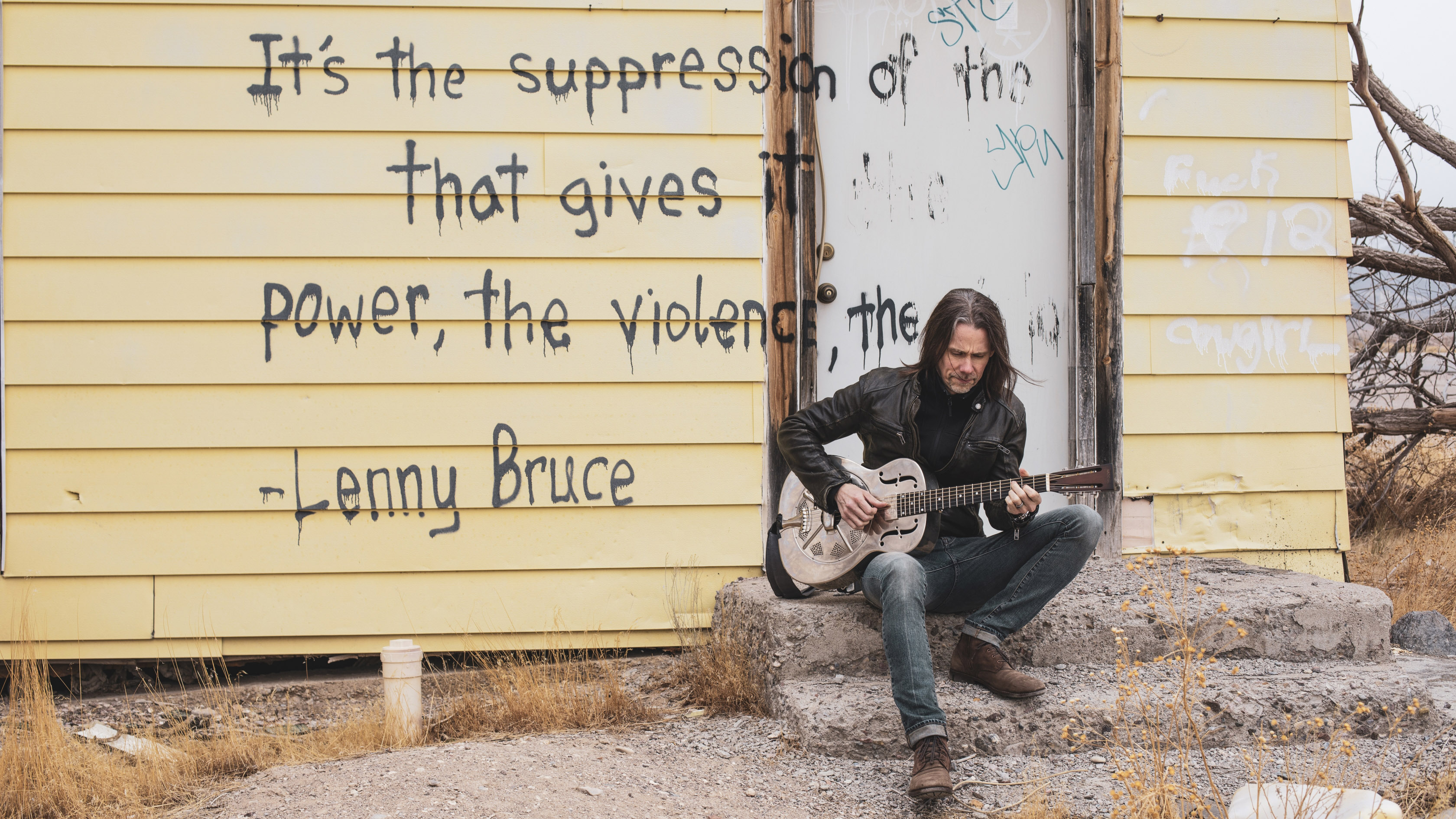
"I can go back to my years of listening to Larry Carlton, trying to emulate his approach to solos where you’re touching on the chord tones, but you also have passing tones"
There’s great solos in the title track and Worried Mind too, where it breaks down to that slow blues approach that's always good to hear from you. That approach that you have in Blackbird . It must have been good to stretch out again with the soloing?
“You know me so well, you know what I like! I just love playing guitar and that kind of thing where it’s stripped down. I can go back to my years of listening to Larry Carlton, trying to emulate his approach to solos where you’re touching on the chord tones, but you also have passing tones. I love that and what’s interesting is the solo I played on Ides of March is what I played on the demo. I ended up getting really attached to it and saying, you know what, I don’t think I’ll be able to better that so I’m just going to recreate that in the studio.
"And it’s weird because I still might prefer how I approached the demo because I was really laying back in the pocket. It was way back. Now I hear it [the album version] and it’s pretty on the beat.”
I noticed on the last Alter Bridge tour that you were using Teles - are they Fenders?
“Yes, and what’s interesting about the black Tele you saw, that was a gift from Tim [Tournier] my manager. He knows I used to play Teles a lot in the ‘90s and I was kind of rekindling my love affair with the Tele. And I started getting into older Teles, Blackguards in particular. So a lot of this record was written on this ‘52 Blackguard - there’s just something about it, it’s got a thing. This pickup almost sounds like a P-90. When you think of a Tele, you think of that twang, this is not that guitar. It’s like a Tele on steroids. This was all over the record and a lot of the songs were written on that. But it’s a real monster to play because of the radius – it’s that 7 ¼ radius and I was playing heavier gauge strings.
"When we were making the record, it got to the point where my tendonitis had flared up so much that we would have to take days off. I was like, what’s going on? And I did some reading and found that radius can really mess with your hand so I backed off on the string gauge [thinking] bu it’s not as manly to play 9.5s! So I just have to accept where I am.”
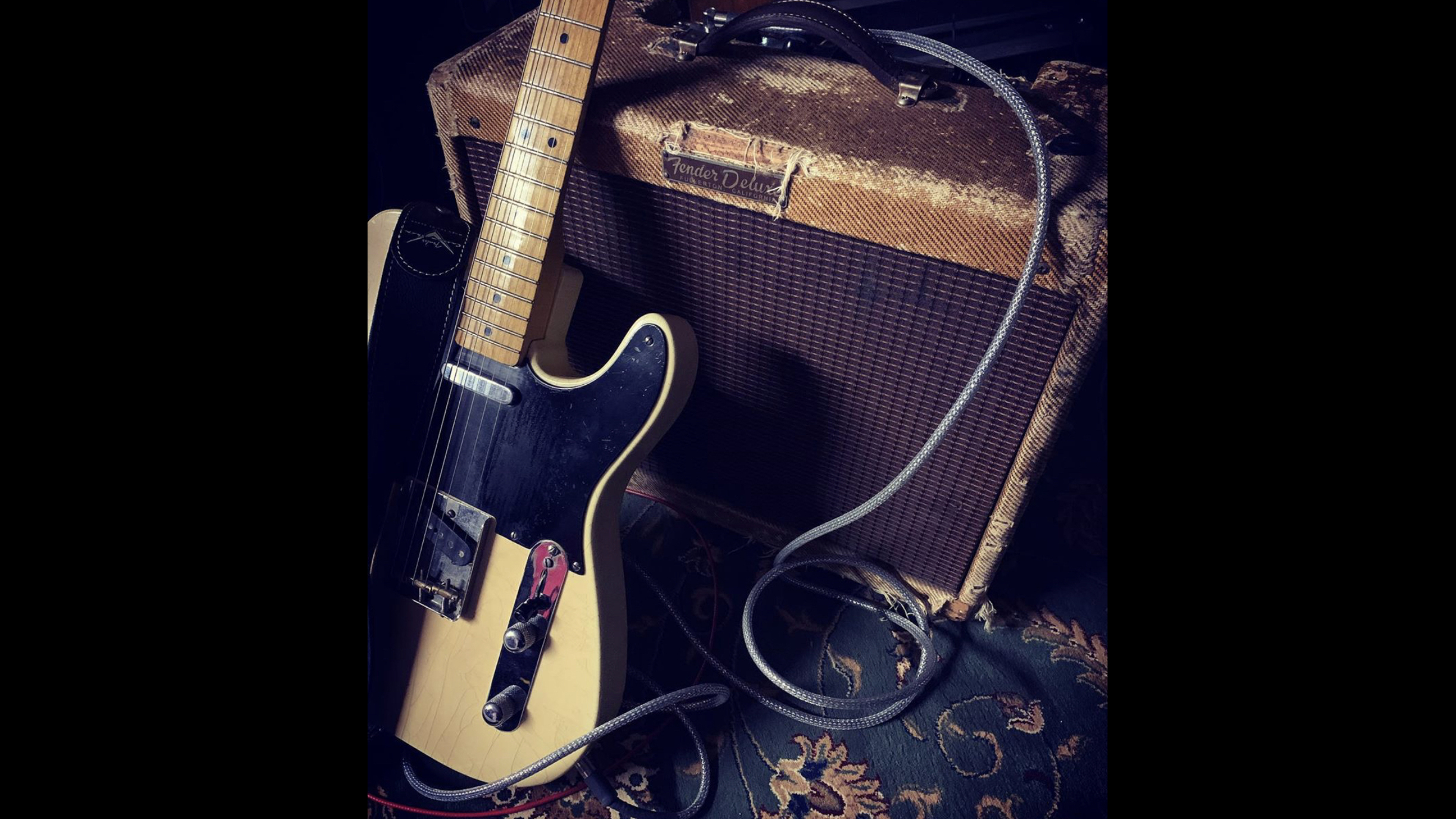
Then I acquired a 1958 Gibson 335 and it’s just… man I don’t even know how to articulate what a special guitar it is
Anything else new that you brought into the mix?
“It wasn’t new but the interesting thing about most of what you hear on the record was made between 1952 and 1958 so the amp was a ‘58, the two main guitars were the ‘52 and then I acquired a 1958 Gibson 335 and it’s just… man I don’t even know how to articulate what a special guitar it is.
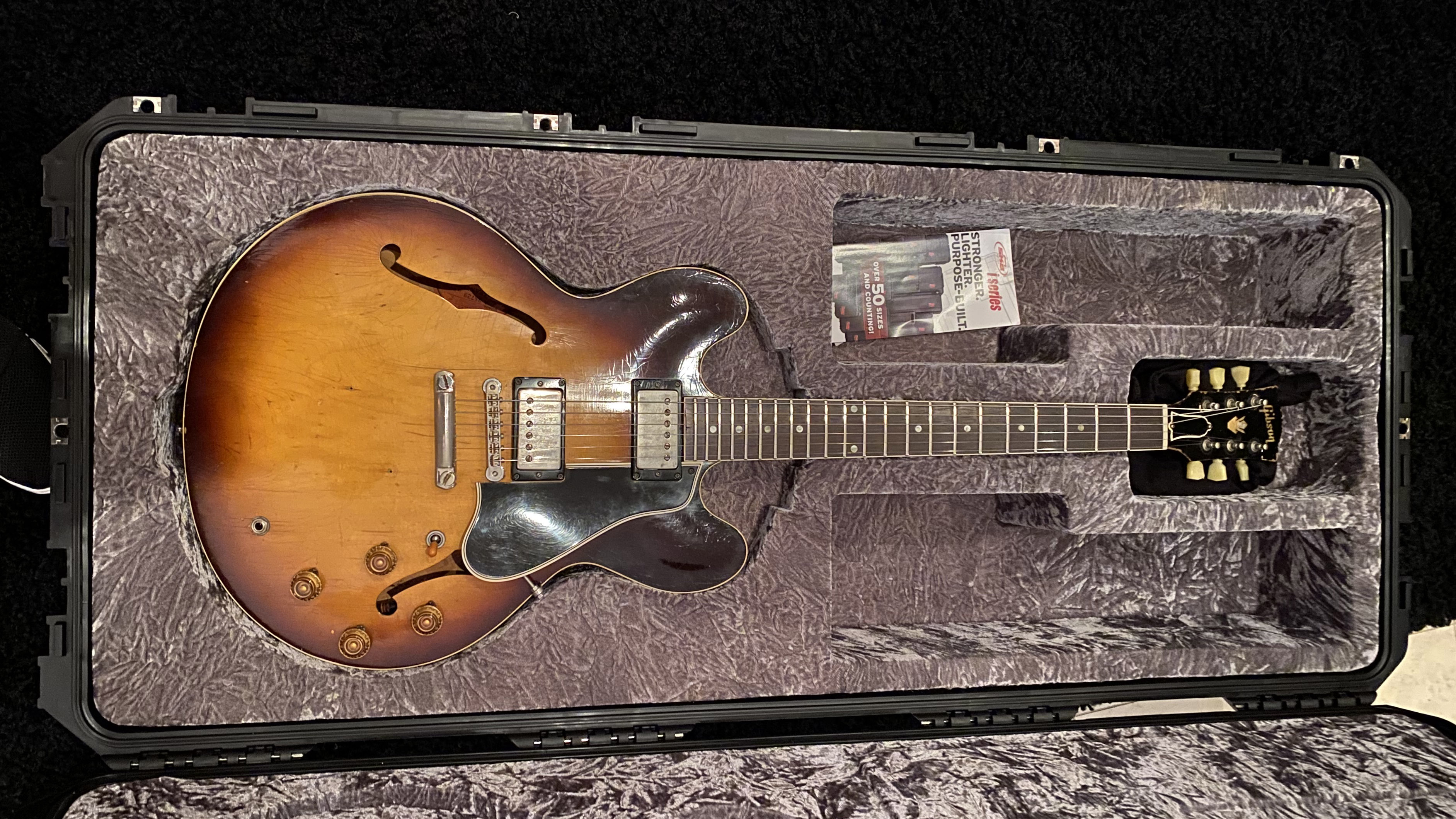
"Most of the solos were played with that guitar. The solo on Worried Mind, the solos on The Ideas Of March and A Thousand Words. It’s those PAFs, that period of PAFs from about 1958 to 1961, I think they had the longer magnet deals. Super guitar geek guys are going to be like, ‘What are you talking about?! Magnet deals?! Who are you?’ I’m an idiot. But it’s a special guitar.
As far as the lapsteel, that baby right there [points to lapsteel] is a 1954 Fender with a single coil. And amps, it was the Deluxe, a 1974 Marshall combo that was Elvis’s, Amplified Nation which is similar to a Dumble and I believe we used a Diezel Schmidt that they don’t make anymore – those are great amps. Those are a few of the toys.”
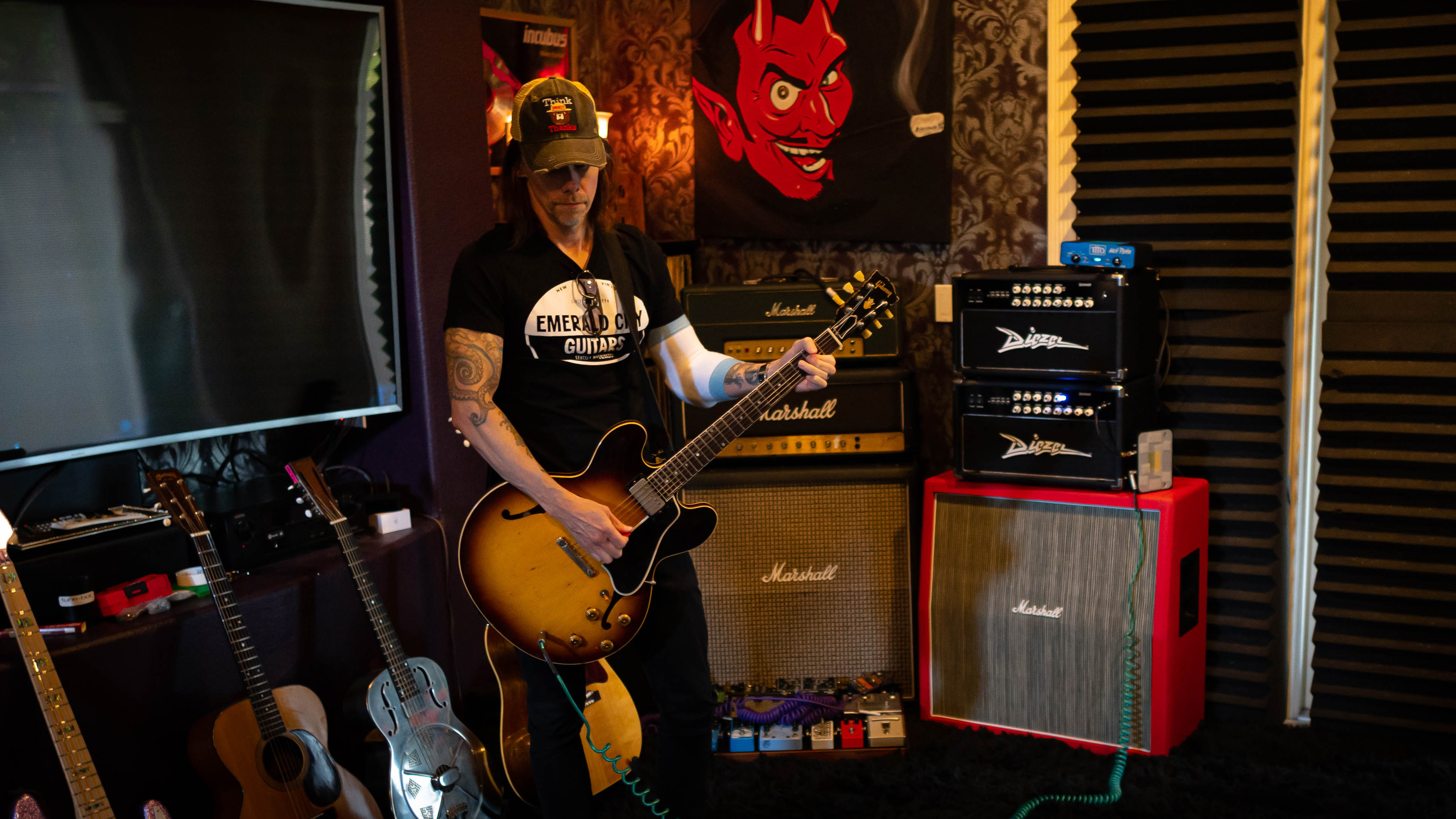
You’ve played a lot of guitars, do you think they just got it right early on with the PAFs?
“Yes they did. And I think what a lot of people don’t realise, what I find with a lot of PAF recreations where people try to emulate that, what it doesn’t seem to get is the top end. It’s a much brighter pickup that people realise.
"People think of a PAF as a big wooly pickup and it can be but there’s a distinct top end and I think that’s what people like, because it cuts a certain way. It’s got a way that it jumps out in a mix that’s really special.”
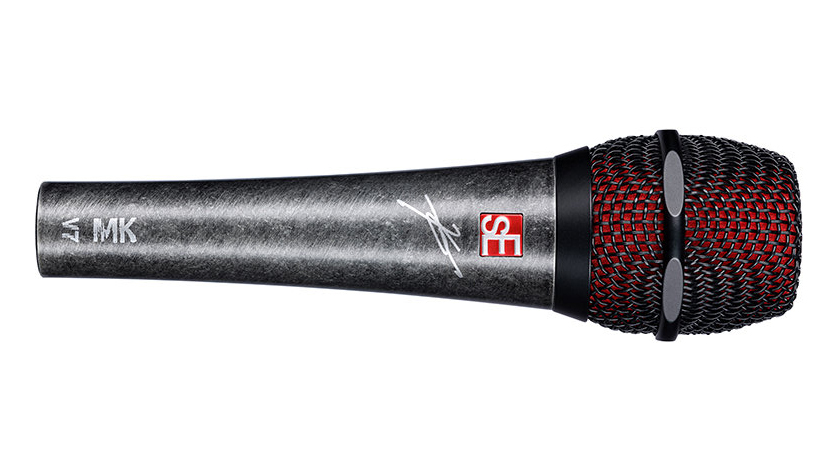
This mic is amazing. Because it had that rejection – I wasn’t getting all that ambient noise coming through and I wasn’t having to sing as hard
I have to ask you about what is right in front of you there – your SE Electronics V7 signature mic. Signature mics are not a common occurrence so how did it come about? Had you been using the V7 before?
“I’d been using a certain mic for decades prior to this and I’m not a really loud singer, so a lot of times the issue would be that a lot of the cymbals and guitars would bleed into the mic I was using and it would be hard for the engineer out front to mix it. So they would always put different mics in front of me that would reject some of that, but what I found is because my voice does what it does and has certain frequencies, it didn’t always works as well as the tried and true mic I’d been using for decades. So we go back to it.
“One day my engineers on the Alter Bridge side of things, Patty and Joey, said they had this mic they wanted me to try. And at this point I’m like the old dog who doesn’t want to try new tricks. So I said, ‘Ok, I’ll try it during soundcheck. We’ll give it a shot.’ We were in the UK and I’ll tell you what by the time I got to the chorus I was never stepping away from this mic. This mic is amazing. Because it had that rejection – I wasn’t getting all that ambient noise coming through and I wasn’t having to sing as hard. All the right frequencies were there, I could hear my mask and it was very present.
“So they brought up the idea of meeting some of the folks at SE and we got to talking. They asked if I’d be up for doing a signature mic and I was like, absolutely because I love this thing, I believe in it and it’s what I’m going to use. So yeah, I was honoured.”
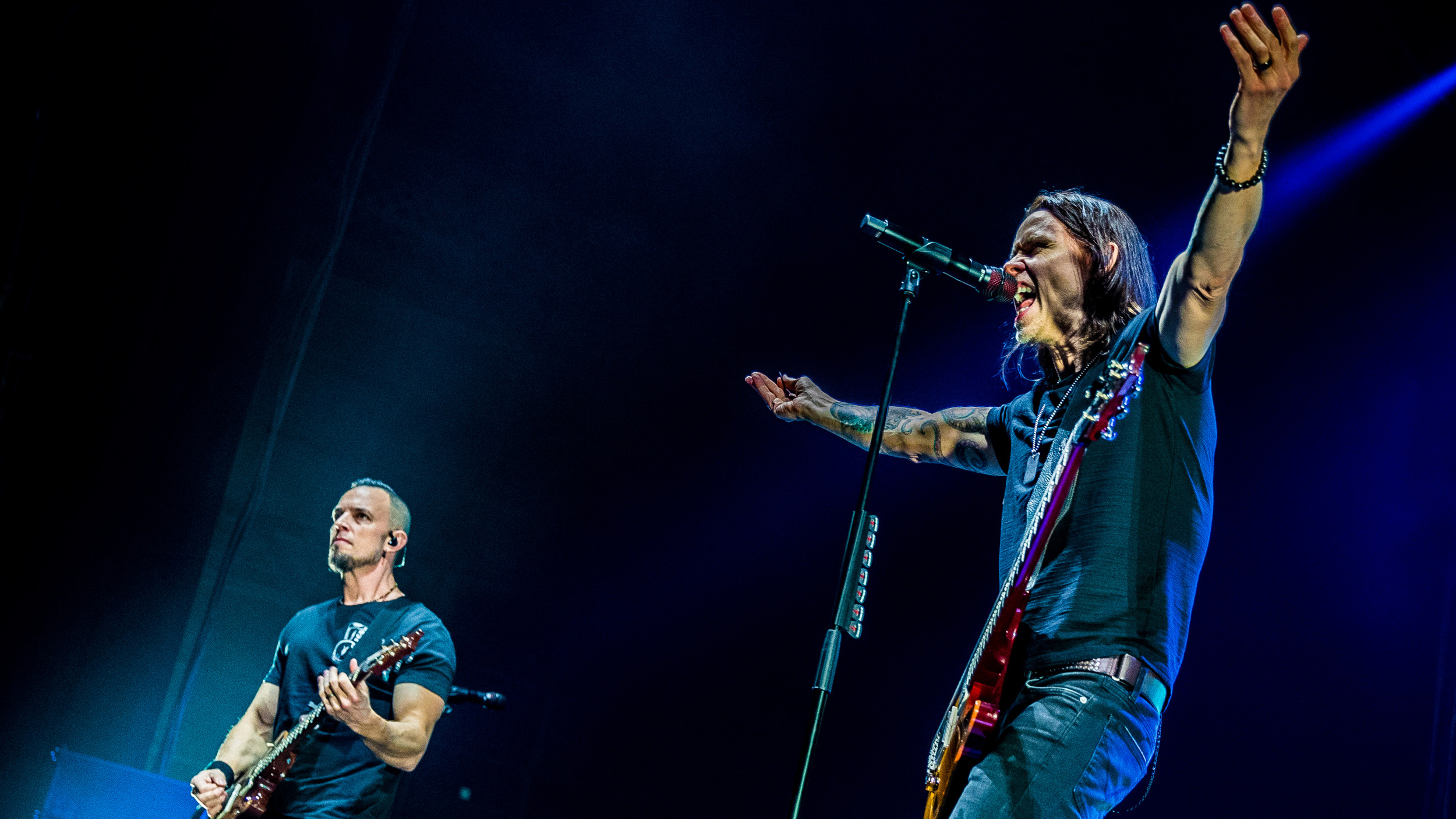
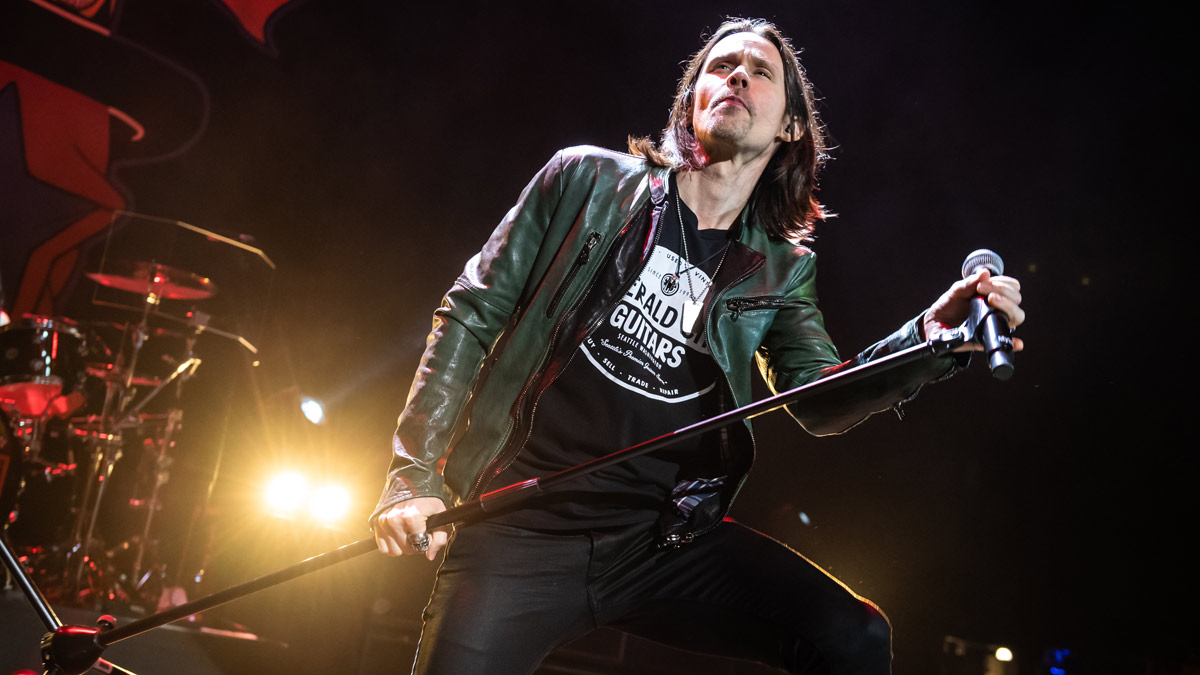
Mic technique is often overlooked by some singers – do you have any tips to pass on?
“That’s really interesting you should bring that up because different mics react differently. And I’ve actually had to change my technique a little bit with this mic and not be up on it quite so much. It doesn’t seem to need that and it’s taking some getting used to because on the old mics I’d be right up on it. And that’s what I was taught – keep your upper lip right on the mic. So that’s something I’m learning.
“Here’s a big one; and I still make this mistake occasionally, especially in the Slash realm when I don’t have the guitar. Singers will grab the mic here [holds mic high up] and sing like this [close up] which creates this weird like… I don’t even know what that is. It’s actually as bad with this mic but with other mics that will create this very strange sound and it’s a nightmare for the front of house guy. I try to keep my hand right here [further down] but for some reason it just looks cool when singers do it. But it definitely sounds better.”
It’s so easy to forget that when you’re in the moment.
“All you’re worried about is how you’re going to remember the lyrics - not how you’re holding the mic!”
The Ides Of March is out now on Napalm Records. For more info and to stay updated on Myles Kennedy's forthcoming tours, visit myleskennedy.com

Rob is the Reviews Editor for GuitarWorld.com and MusicRadar guitars, so spends most of his waking hours (and beyond) thinking about and trying the latest gear while making sure our reviews team is giving you thorough and honest tests of it. He's worked for guitar mags and sites as a writer and editor for nearly 20 years but still winces at the thought of restringing anything with a Floyd Rose.
"Reggae is more freeform than the blues. But more important, reggae is for everyone": Bob Marley and the Wailers' Catch a Fire, track-by-track
“Part of a beautiful American tradition”: A music theory expert explains the country roots of Beyoncé’s Texas Hold ‘Em, and why it also owes a debt to the blues









